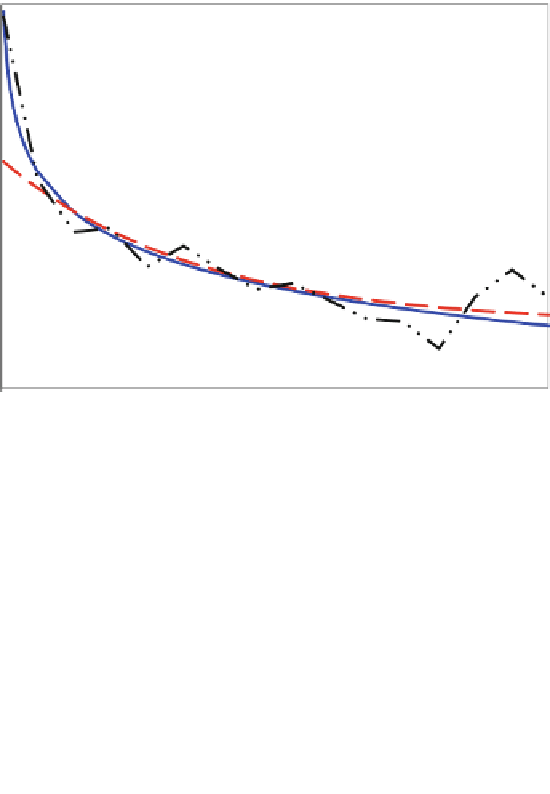Geoscience Reference
In-Depth Information
1
0.8
0.6
0.4
0.2
0
-0.2
0
5
10
15
20
25
30
Lag distance (m)
Fig. 11.12 Estimated autocorrelation coefficients (partly broken line) for 118 zinc concentration
“signal” in Fig.
2.10
. Solid line is based on multifractal model that assumes continuance of self-
similarity over distance less than the sampling interval (Source: Agterberg
2012b
, Fig. 3)
semivariogram model provides a good fit. It is equivalent to the logarithmic
semivariogram model introduced by Matheron (
1962
, p. 180; also see Table
6.1
)
and also used by Agterberg (
1994a
, p. 226).
Cheng and Agterberg (
1996
) derived the following expression for the autocor-
relation function of a multifractal:
h
i
ʵ
˄ ðÞ
2
2
2
C
ʾ
Þ
˄ ðÞþ
1
Þ
˄ ðÞþ
1
2
k
˄ ðÞþ
1
ˁ
k
ðÞ
¼
ð
k
þ
1
þ
ð
k
1
˃
2
ðÞ
˃
2
ðÞ
where
C
is a constant,
represents length of line segment for which an average zinc
concentration value is assumed to be representative,
E
˄
(2) is the second-order mass
2
(
exponent,
ʾ
represents overall mean concentration value, and
˃
) is the variance
E
of the zinc concentration values. The unit interval
is measured in the same
direction as the lag distance
h
. The index
k
is an integer value that later in this
section will be transformed into a measure of distance by means of
k
ʵ
h
.
Estimation for the 118 Pulacayo zinc values using an ordinary least squares
model with
¼
½
˄
(2)
¼
0.979 gave:
h
i
1
:
979
2
k
1
:
979
1
:
979
ˁ
k
¼
4
:
37
k
ð
þ
1
Þ
þ
ð
k
1
Þ
8
:
00






















Search WWH ::

Custom Search